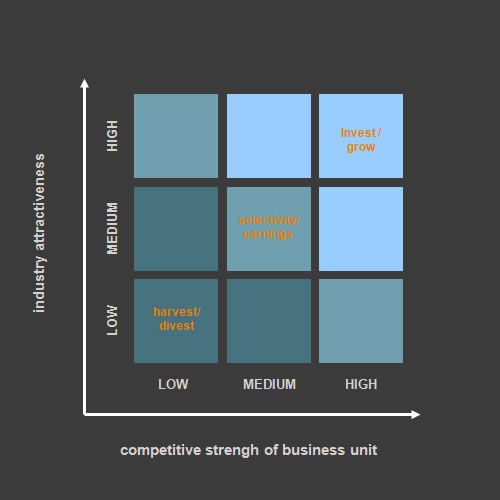Difference Between Harvest and Divest
The need for a balanced portfolio is key in any enterprise as it allows for the incorporation of current and future market growth opportunities. For this to be achieved, various strategies may be used, such as:
- Hold- This is a scenario whereby an enterprise chooses to continue with the same activities so as to maintain the status quo
- Build- Businesses may prefer to make further investments so as to maintain the market share of a star or convert a question mark into a star
- Harvest- This is the utilization of cash flow from the sale of products at their end cycle so as to maximize profits.
- Divest- This is the reduction of assets mainly for financial, political, ethical objectives. It can also be due to the sale of an existing business.
Once an enterprise has achieved a balanced portfolio, the most appropriate strategy can be implemented.

What is Harvest?
This is the reduction or termination of products, line of business or product line investments so as to get the maximum yields. This occurs at the end of a product cycle when the product in the market can no longer be used to boost revenue. When a products life cycle nears its end and observations are made on low returns, businesses may cut additional investment and marketing efforts. This is referred to as the cash cow stage. Hence a harvest strategy at this stage allows companies to gain maximum profits from the product. The gains can then be used in the development and promotion of existing products.

What is Divest?
This is the reduction of assets mainly for financial, political, ethical objectives. It can also be due to a sale of an existing business.
A firm may have various motives for divestitures including;
- To sell businesses that are no longer part of the major operation
- To source for funds
- To enhance stability in the firm
- To eliminate under-performing divisions
- Need for divestiture from the governing authorities
- Social reasons, for instance, global warming
Similarities between Harvest and Divest
- Both are strategies that can be used to achieve a balanced portfolio in a firm
Differences between Harvest and Divest
Definition
Harvest is this is the reduction or termination of products, line of business or product line investments so as to get the maximum yields which occur at the end of a product cycle when the product in the market can no longer be used to boost revenue. On the other hand, divest is the reduction of assets mainly for financial, political, ethical objectives. It can also be due to the sale of an existing business.
Motives
While the motive in harvest is to achieve the maximum yields from the sale of products and services at the end of their cycle, the motive in divest is to sell businesses that are no longer part of the major operation, source for funds, enhance stability in the firm, eliminate an under-performing divisions, and social reasons such as global warming.
Harvest vs. Divest: Comparison Table

Summary of Harvest vs. Divest
Harvest is a strategy involving the reduction of spending on a product so as to reduce operating costs and mainly involves outdated products. On the contrary, divest is the reduction of assets mainly for financial, political and ethical objectives.
- Difference Between Profit Center and Investment Center - July 2, 2022
- Difference Between Anti-Trust and Anti-Competition - June 6, 2022
- Difference Between Stocktaking and Stock Control - June 6, 2022
Search DifferenceBetween.net :
 Email This Post
: If you like this article or our site. Please spread the word. Share it with your friends/family.
Email This Post
: If you like this article or our site. Please spread the word. Share it with your friends/family.
Leave a Response
References :
[0]Image credit: https://commons.wikimedia.org/wiki/File:McKinsey1.jpg
[1]Image credit: https://commons.wikimedia.org/wiki/File:20170514_Divest_anti_Shell_Van_Gogh_sponsoring_demonstration_Museumplein_Amsterdam_(34489926912).jpg
[2]Levi K. Market Entry Strategies of Foreign Telecom Companies in India. Springer Science & Business Media, 2007. https://books.google.co.ke/books?id=fdmDxGrLaL4C&pg=PA28&dq=Difference+between+harvest+and+divest&hl=en&sa=X&ved=0ahUKEwjM0ajXgJPhAhWO1uAKHQorDpcQ6AEIJjAA#v=onepage&q=Difference%20between%20harvest%20and%20divest&f=false
[3]Needham David. Business for Higher Awards. Heinemann Publishers, 1999. https://books.google.co.ke/books?id=8w3hXLIBfywC&pg=PA88&dq=Difference+between+harvest+and+divest&hl=en&sa=X&ved=0ahUKEwjM0ajXgJPhAhWO1uAKHQorDpcQ6AEILDAB#v=onepage&q=Difference%20between%20harvest%20and%20divest&f=false
[4]McDaniel C, Hair J & Lamb C. Marketing. Cengage Learning Publishers, 2012. https://books.google.co.ke/books?id=H_T6CAAAQBAJ&pg=PT57&dq=Difference+between+harvest+and+divest&hl=en&sa=X&ved=0ahUKEwjM0ajXgJPhAhWO1uAKHQorDpcQ6AEIMjAC#v=onepage&q=Difference%20between%20harvest%20and%20divest&f=false

